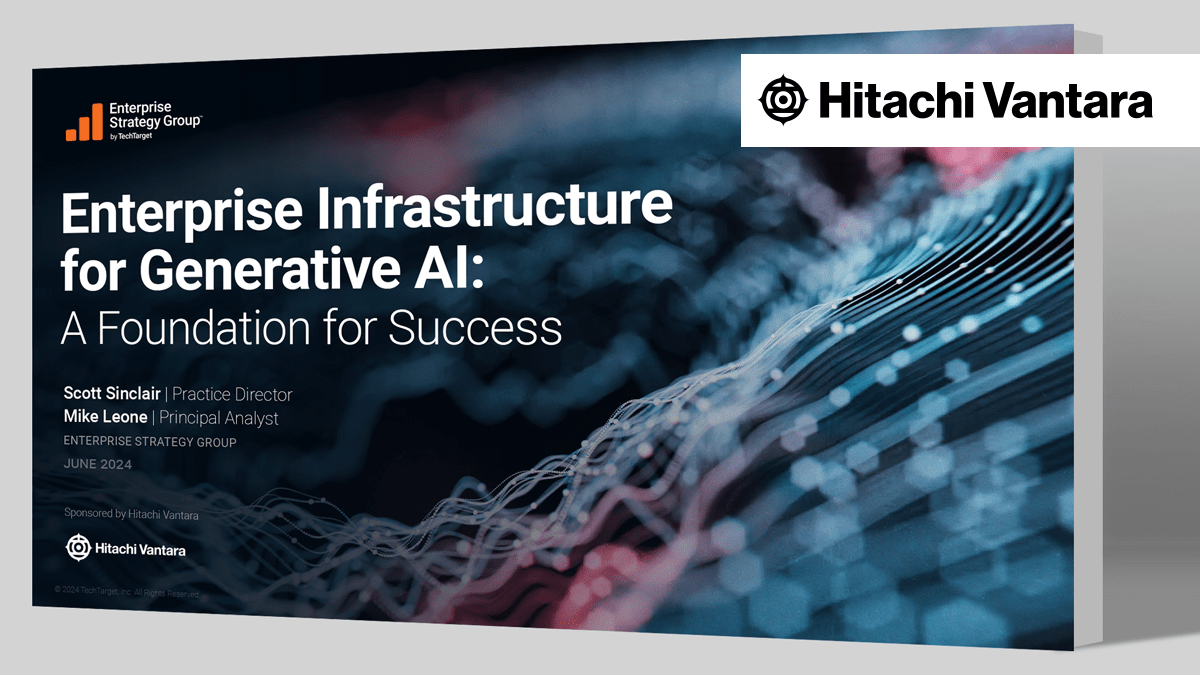A new report by Hitachi Vantara and Enterprise Strategy Group reveals critical challenges threatening the success of Generative AI (GenAI) projects. Surveying 800 IT and business leaders, the study shows that despite 97% of organisations viewing GenAI as a priority, only 44% have well-defined policies in place. The report identifies lack of governance, infrastructure readiness and skilled IT talent as key stumbling blocks. Companies seeking lower-cost infrastructure options are driven towards GenAI for process automation, predictive analytics and fraud detection but concerns around data privacy, compliance and data quality issues persist.
According to Hitachi Vantara ESG report:
- 97% of organisations prioritise GenAI, but only 44% have comprehensive governance policies in place.
- 61% of respondents agree that most users lack the knowledge to capitalise on GenAI, with 51% citing a lack of skilled employees in GenAI.
- 71% of organisations believe their infrastructure needs modernisation before pursuing GenAI projects, with 96% preferring non-proprietary models.
The GenAI Challenge: New Research Report Reveals Major Hurdles
In the world of ever-evolving technology, Generative Artificial Intelligence (GenAI) is seen as the new frontier. A recent report, co-sponsored by Hitachi Vantara and Enterprise Strategy Group (ESG), has shed light on the increasing challenges that could potentially hamper the success of GenAI projects, despite the rising interest and enthusiasm towards it.
GenAI: A Top Priority Yet Underprepared
The survey conducted by the ESG and Hitachi Vantara involved 800 IT and business leaders primarily from Western Europe, the United States and Canada. The research findings suggest that a staggering 97% of organisations currently using GenAI consider it as one of their top-five priorities. Furthermore, nearly two-thirds (63%) claim to have identified at least one use case. However, less than half (44%) of these organisations have comprehensive and well-defined policies in place, revealing a considerable gap in GenAI’s implementation.
Infrastructure Readiness and IT Talent: Key Concerns
Organisations are showing a keen interest in GenAI, but only 37% believe their infrastructure and data ecosystem is well-prepared for implementing GenAI solutions. Moreover, there is a clear disconnect as C-level executives were 1.3 times more likely to indicate that their infrastructure and data ecosystem is highly prepared.
“Enterprises are clearly jumping on the GenAI bandwagon, which is not surprising, but it’s also clear that the foundation for successful GenAI is not yet fully built to fit the purpose and its full potential cannot be realised,” said Ayman Abouelwafa, chief technology officer at Hitachi Vantara.
Building a Robust Foundation for GenAI
The report findings reveal that organisations are actively seeking out lower-cost infrastructure options but are also taking privacy and latency into account. A significant 71% of respondents agreed that their infrastructure needed to be modernised before pursuing GenAI projects. Moreover, 96% of survey respondents prefer non-proprietary models, 86% will leverage Retrieval-Augmented Generation (RAG), and 78% cite some mix of on-premises and public cloud for building and using GenAI solutions.
Drivers and Barriers to GenAI Adoption
When it comes to enterprise investment in GenAI, the most cited use cases revolve around process automation and optimisation (37%), predictive analytics (36%), and fraud detection (35%). However, just over four in five (81%) of respondents agreed on concern around ensuring data privacy and compliance when building and using applications that leverage GenAI, while 77% agreed that data quality issues needed to be addressed before accepting the results of GenAI outputs.
Final Thoughts
The research report from ESG and Hitachi Vantara provides an insight into the landscape of GenAI adoption. While GenAI is seen as a top priority by many organisations, the findings suggest that there is a significant lack of preparedness and comprehensive governance policies in place. As GenAI continues to evolve, it is crucial for organisations to address these challenges head-on to fully reap the benefits of this powerful technology. With the right infrastructure and adequate planning, GenAI holds a promising future in the realm of technology.
FAQ
Q: What percentage of organisations already using GenAI view it as a top-five priority?
A: 97% of organisations already using GenAI view it as a top-five priority.
Q: What percentage of organisations have comprehensive governance policies in place for GenAI?
A: Just 44% of organisations have comprehensive governance policies in place for GenAI.
Q: What are the top barriers to GenAI adoption as cited by organisations?
A: Organisations cite security, infrastructure, and data management as the top barriers to GenAI adoption.
Q: What percentage of organisations believe their infrastructure and data ecosystem is well-prepared for implementing GenAI solutions?
A: Only slightly more than one-third (37%) of organisations believe their infrastructure and data ecosystem is well-prepared for implementing GenAI solutions.
Q: What percentage of respondents reported a lack of skilled employees with GenAI knowledge?
A: 51% of respondents reported a lack of skilled employees with GenAI knowledge.
Q: What is the primary area where businesses are seeing results from GenAI investment?
A: Improving operational efficiency is the primary area where businesses are seeing results from GenAI investment.
Q: What are the key drivers for enterprise investment in GenAI as per the report?
A: The most cited use cases driving enterprise investment in GenAI include process automation and optimisation (37%), predictive analytics (36%) and fraud detection (35%).
Q: What is Hitachi Vantara’s industry-optimised solution suite for AI workloads?
A: Hitachi Vantara’s industry-optimised solution suite for AI workloads is Hitachi iQ.
